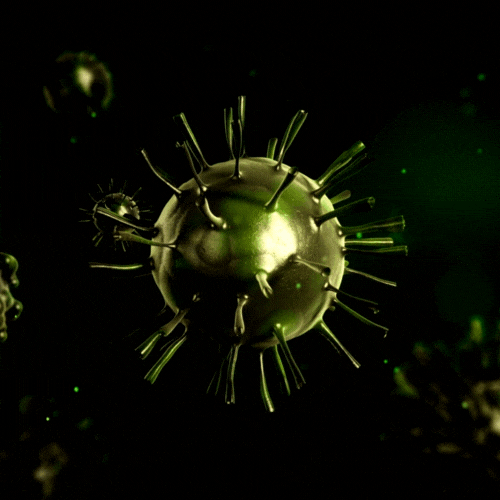
Disinfection & Cleaning 101
There are many types of disinfectants and cleaners, often combined together to enable cleaning and disinfecting in one easy step. Disinfectants are supposed to be registered with the EPA, and are intended for use on hard surfaces, not human skin. Surface cleaning removes dirt and germs while disinfecting kills germs and further minimizes the risk of spreading infection. See notes further down this page for more information on the varying types of disinfectants, and what they kill.
Surface cleaning removes dirt and germs while disinfecting kills germs and further minimizes the risk of spreading infection. Surfaces are more effectively disinfected when they are clean. Heavily soiled areas should always be cleaned first as dirt creates uneven surfaces that make them harder to disinfect.
We recommend wearing gloves when cleaning and disinfecting, and depending on the method being used to clean, perhaps facemasks, coveralls, goggles, shoe coverings etc. Try to ensure adequate ventilation as well when cleaning and disinfecting.

Products On EPA List N
The EPA provides a list of registered disinfectants with proven kill claims for the SARS-CoV-2 Covid-19 virus. The EPA list includes ready-to-use products, concentrated chemicals that require diluting, and disinfecting wipes. The list indicates the “dwell” time it takes for the product to kill the virus, and what additional surfaces were tested. This list features the actual chemicals that are tested, and does not necessarily list the product brand names that include the chemical, making it harder to determine if a specific product is on the list. All disinfectants are supposed to be registered with the EPA, though some are not.
The EPA regulates disinfectants, considering them “pesticides” as they kill microorganisms. The FDA regulates hand sanitizers as they are in contact with the body.
Surfaces
Surfaces that are frequently touched are most in need of disinfection. In the office, some of the more commonly touched areas include:
- Countertops
- Tables
- Door handles
- Buttons
- Touch screens
- Light switches
- Faucets
- Sinks
- Toilets
- Soap dispensers
- Paper towel dispensers
- Coffee brewers
- Refrigerators
- Microwaves
Some of the most commonly touched areas in personal work areas include desk surfaces and handles, keyboards, mice, and phones. These are the surfaces that should be set up for regular routines of disinfection.
Hard, less porous surfaces are easier to disinfect, so you may want to consider replacing objects with porous surfaces. Also, consider removing frequently handled items that are not genuinely needed, as this helps avoid cross-contamination.
How They Work

Disinfectants destroy or inhibit the growth of harmful organisms. They typically attach to the cell’s surface and disrupt the cell activity of the microorganism. In addition, disinfectants eliminate the food source for the cell, causing the cell to die. Based on their function, none are considered Green by organizations like Green Seal.
The most common disinfectant chemicals include quaternary ammonium chloride compounds (also called quats), sodium hypochlorite (bleach), hydrogen peroxide, benzalkonium chloride, and pine-based solutions. They are typically used for general cleaning, bathroom cleaning, floor cleaning and carpet cleaning.
Quats:
Quats are absorbed by cells, but as the cells can’t digest them, the calls effectively starve to death. Quats are considered a “broad spectrum” killer, killing a wide range of germs, though they are considered user-friendly, being less corrosive than other disinfectants. Quats combine well with surfactants/cleaners to allow a product to both clean and disinfect. Some of these products also include a deodorizers. Quats are cost-effective and represent approximately 95% of all disinfectant products.
SODIUM HYPOCHLORITE:
Sodium hypochlorite is the main active ingredient in bleach. While comparatively inexpensive, it tends to kill almost everything and is considered corrosive, so it should be used selectively to kill certain types of germs. It is not an effective cleaner, and it can react poorly with other chemicals, creating toxic gas. It also has a strong odor and should be used in well ventilated areas.
HYDROGEN PEROXIDE:
Hydrogen peroxide is a versatile, user-friendly disinfectant. Some consider it the “new” version of bleach. It is not corrosive and can be used safely on window cleaning, carpets, hard surfaces, and floors when neutral.
PINE OIL:
Pine oil is considered “nature’s disinfectant”. It is inexpensive, but it is not a broad-spectrum killer, and it is not a very good cleaner. However, some people associate a pine odor with being clean.
ALCOHOL:
Alcohol is typically used with hand sanitizers and surface sprays. It does not provide much surface contact, or dwell, time as it flashes off quickly. It is usually used in small use containers as it is flammable. Some hand sanitizers are made with benzalkonium chloride. It is generally considered less reliable than alcohol in killing viruses.
Kill Claims & kill Times
Each chemical and product may have very specific “kill” claims as to what germs it kills. In addition, each product may require a different amount of time in contact with a germ to kill it. The same product may require different times for different germs. This may be referred to as “wetting” time or “dwell” time.
Always be sure to follow directions, allowing the needed contact time for the disinfectant to work. Disinfectants are generally not targeted to kill mold. Therefore, only products with mold-killing claims should be considered for performing this task.

Make sure to follow all manufacturers’ guidelines for diluting and applying all Disinfectants & Cleaning products. When using bleach, keep in mind that it is not safe for all surfaces, so you may wish to test their reaction to the bleach first. Also, do not mix bleach mixed with ammonia or any other cleaner. Finally, ensure that your disinfectant is not past its’ expiration date, which is typically two years.
According to the instructions on the package, cleaners/disinfectant solutions are available in “Ready-To-Use” (RTU) packaging or in concentrated solutions that need to be diluted with water. Ready-To-Use products typically come in a quart-size bottle with a sprayer or as aerosol cans.
Concentrated solutions tend to be much more cost-effective, but you need to ensure that the product is properly diluted to work correctly. We offer systems that help ensure concentrated products are diluted correctly, and quickly.




